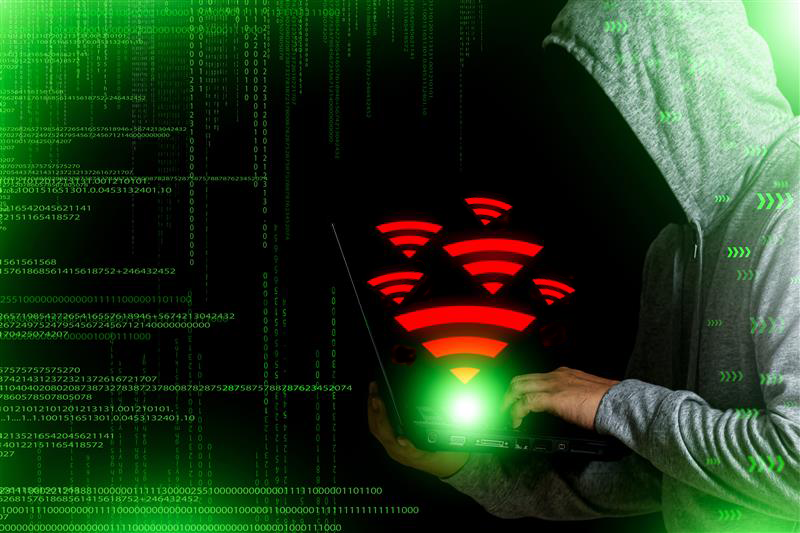
A smart home security system is only as “smart” as its ability to outsmart criminals. And the relatively new trend of illegal Wi-Fi jamming means protection must extend beyond the home, to the security system itself.
Hackers use Wi-Fi jamming to disrupt a home’s network in an attempt to avoid triggering alarms. Fortunately, ADT has systems in place to stay smarter than these threats, providing encrypted communication between devices to ensure alarms are still reported during jamming attempts or routine Wi-Fi outages.
The growing threat of Wi-Fi jamming
Wi-Fi jamming occurs when an attacker uses a device to flood radio frequencies (RF) with noise, blocking the signals smart home devices rely on to communicate. Using illegal RF jammers, hackers can prevent devices like Wi-Fi cameras from working together.
“Imagine a Wi-Fi-connected security system as cars driving through a tunnel. With Wi-Fi jamming, a hacker mimics the Wi-Fi bands. It’s like sending a massive traffic jam into the tunnel. The cars can’t get through the tunnel, and the security stops functioning,” explains Jimmy Lin, ADT’s Vice President of Product Management.
Although Wi-Fi jamming is illegal in many countries, including the United States, enforcement is challenging. This leaves home security systems that rely solely on Wi-Fi vulnerable to compromise during critical moments.
The DECT ULE advantage
ADT separates itself from competitors with DECT ULE (Digital Enhanced Cordless Telecommunications — Ultra Low Energy) technology. It is a wireless communication standard designed specifically for low-power, long-range applications such as home automation, security systems and healthcare devices. While most smart home systems rely heavily on Wi-Fi, ADT uses DECT ULE for crucial communications within its security systems.
“DECT ULE is a game-changer,” says Tim Rader, ADT’s Vice President of Product Engineering. “It operates on its own frequency, separate from crowded Wi-Fi bands, allowing it to function even during most jamming attempts.”
Lin adds, “Unlike the standard 2.4 GHz and 5 GHz Wi-Fi bands, DECT ULE operates at different frequencies and hackers would then need to bypass an additional layer of encryption.”
ADT+ cellular backup system
The new ADT+ Base further enhances reliability with cellular connectivity as a backup system. If Wi-Fi goes down — whether from jamming, outages or interference — the system seamlessly switches to a secure cellular connection.
“The ability to fall back on cellular connectivity ensures your system stays operational when it matters most,” Rader says. This redundancy keeps devices such as door/window sensors, motion sensors, and alarms online for continuous protection.
Leading the industry in resilience
ADT’s dual approach — combining DECT ULE with a cellular backup — establishes a new standard for reliability. This strategy addresses both deliberate jamming attempts and unexpected network failures.
“Today’s smart homes demand resilience,” Rader says. “A single point of failure, like Wi-Fi, is no longer sufficient. By integrating cellular backup and DECT ULE, we’ve created a system that adapts to emerging threats and maintains reliability.”
“We have multiple layers of backup,” Lin adds. “Multiple layers of failsafe. We’ve got different radio technologies to leverage. We’ve also got the cellular backup. At a certain point, it just becomes too complicated for most hackers, and they move along.”
As hackers continue to evolve their tactics, ADT aims to keep outsmarting these threats. If you are interested in protecting your home with an ADT smart home security system, backed by our award-winning 24/7 monitoring, click here to see the package that works best for you and your home.